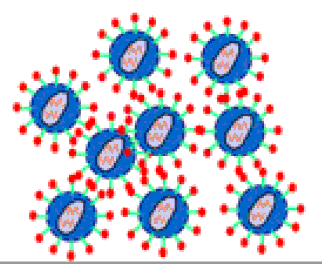Papers in the Biological Sciences
Date of this Version
2006
Document Type
Article
Citation
Published in Journal of Infectious Diseases 193 (2006), pp. 703–712.
Abstract
Here we report the results of an investigation into the possibility that one mechanism responsible for the establishment of persistent human immunodeficiency virus infection is an early regulatory T (Treg) cell response that blunts virus- specific responses. Using the simian immunodeficiency virus (SIV)–infected rhesus macaque model, we show that, indeed, viral replication and immune activation in lymphatic tissue drive a premature immunosuppressive response, with dramatic increases in the frequencies of CD4+CD25+FOXP3+ Treg cells, transforming growth factor–β1+ cells, interleukin–10+ cells, and indoleamine 2,3-dioxygenase+CD3+ cells.When we compared SIV infection with rhesus cytomegalovirus (RhCMV) infection, we found that the frequency of Treg cells paralleled the magnitude of immune activation during both infections but that the magnitude of immune activation and of the Treg cell response were lower and peaked much later during RhCMV infection. Importantly, the frequency of Treg cells inversely correlated with the magnitude of the SIV-specific cytotoxic T lymphocyte response. We conclude that an early Treg cell response during acute SIV infection may contribute to viral persistence by prematurely limiting the antiviral immune response before infection is cleared.
Included in
Animal Diseases Commons, Immune System Diseases Commons, Immunity Commons, Immunology of Infectious Disease Commons, Immunoprophylaxis and Therapy Commons, Veterinary Infectious Diseases Commons, Veterinary Microbiology and Immunobiology Commons, Virus Diseases Commons


Comments
Copyright © 2006 Infectious Diseases Society of America; published by Oxford University Press. Used by permission.